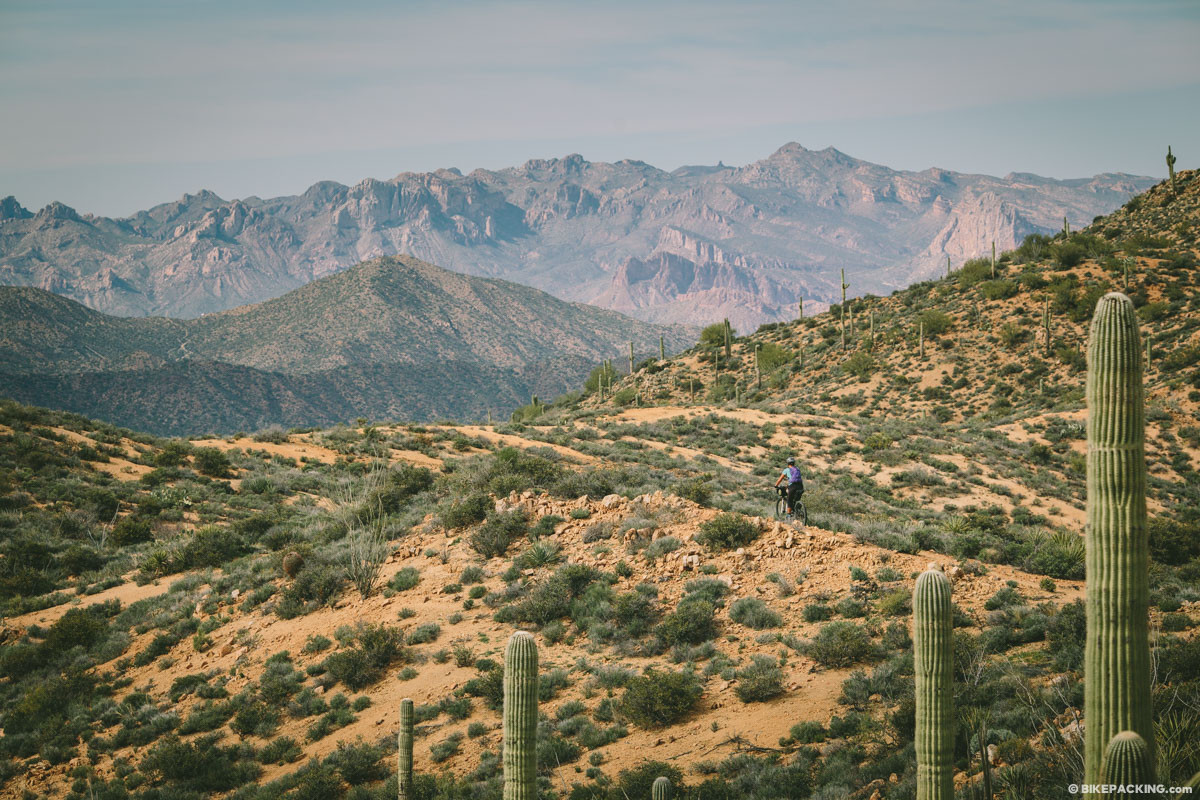Starting on July 13th, Customs and Border Protection is moving ahead with their plans to construct two miles of border barriers through the Huachuca Mountains within Coronado National Memorial, crossing the Arizona National Scenic Trail. Read more here…
Back in May we posted about a new 74-mile segment of border wall between the United States and Mexico that would threaten the southern terminus of the 750-mile Arizona Trail. Well, unfortunately it happened. Note: This post originally appeared on the Arizona Trail Association website and has been republished here in its entirety:
Customs and Border Protection (CBP) announced their plans today to construct two miles of border barriers through the Huachuca Mountains within Coronado National Memorial and across the Arizona National Scenic Trail. Beginning Monday, July 13 the southernmost two miles of the Trail will be closed in the interest of public safety during construction activities.
This project will significantly impact the southern terminus of the Arizona National Scenic Trail, transform the landscape, and forever alter the Arizona Trail experience. The border barrier project includes 30-foot-tall steel barriers filled with concrete, the installation of a linear ground detection system, and the installation of lighting, which will be supported by grid power and embedded cameras. In addition to a 100-foot-wide road along the border wall which will be frequently driven by Border Patrol agents, CBP will also build an access road down Yaqui Ridge. This new road will be within 50 feet of the Arizona Trail.
“The southern terminus of the Arizona National Scenic Trail is one of the most significant locations along the entire 800-mile trail,” said ATA Executive Director Matthew Nelson. “This is where the Arizona Trail begins, and where the dream of the Arizona Trail was born over 30 years ago. This location was intentionally selected as the cornerstone of the Arizona Trail because of its wild and scenic nature, unencumbered views, and the level of protection offered within a National Park Service unit. Construction of the border wall here is an affront to multiple generations who have worked tirelessly toward the construction, maintenance and protection of the Trail.”

Despite over 7,000 public comments in opposition to the project as well as a 9th U.S. Circuit Court of Appeals ruling last month that diverting $2.5 billion Congress appropriated for the military violated the Constitution and is unlawful, CBP is moving swiftly to complete border barrier construction.
In an April 8 letter to Attorney General William Barr, Department of Defense Secretary Mark Esper and Acting Secretary of Homeland Security Chad Wolf, Arizona Congressman Raúl Grijalva and Congresswoman Ann Kirkpatrick wrote, “As COVID-19 continues to spread and our healthcare system grows even more strained, all federal resources being spent on the wall are desperately needed to fight the pandemic. In a time when our communities face the prospect of rationing ventilators and other life-saving care, all of our government’s resources should be spent on building hospitals and medical equipment, and ensuring that the public is safe and healthcare workers have all of the resources they need to face this unprecedented crisis. It is deeply upsetting that while we lead the world in the number of COVID-19 cases, we’ve yet to concentrate all of our powers on containing it. At a minimum, the government should not additionally endanger border residents, and the communities of construction workers, during this crucial period.”
In addition to impacts to the Arizona Trail (a pillar of Arizona’s $21 billion outdoor recreation economy), a border barrier in Southern Arizona’s Sky Islands will bisect critical habitat for endangered jaguars and ocelots, and effectively end jaguar recovery efforts in the United States. “Wildlife encounters are a vital part of the trail experience, and the border wall will sever the international lifeline for these animals,” said Nelson.

The ATA proposed a suite of mitigation recommendations, including utilizing virtual fence technology instead of physical barriers; or rehabilitation of the landscape after border wall construction; or investing money into the state-administered Arizona Trail Fund for trail construction, maintenance and protection projects along the other 798 miles of the Trail. CBP refused the first two recommendations and lacked authority to comment on the third.
“This is devastating to the Arizona Trail and the trail community,” said Nelson. “I hope everyone with a connection to the Arizona Trail and public lands reaches out to their Congressional representatives to express their outrage.”
FILED IN (CATEGORIES & TAGS)
Dispatch
Please keep the conversation civil, constructive, and inclusive, or your comment will be removed.




























